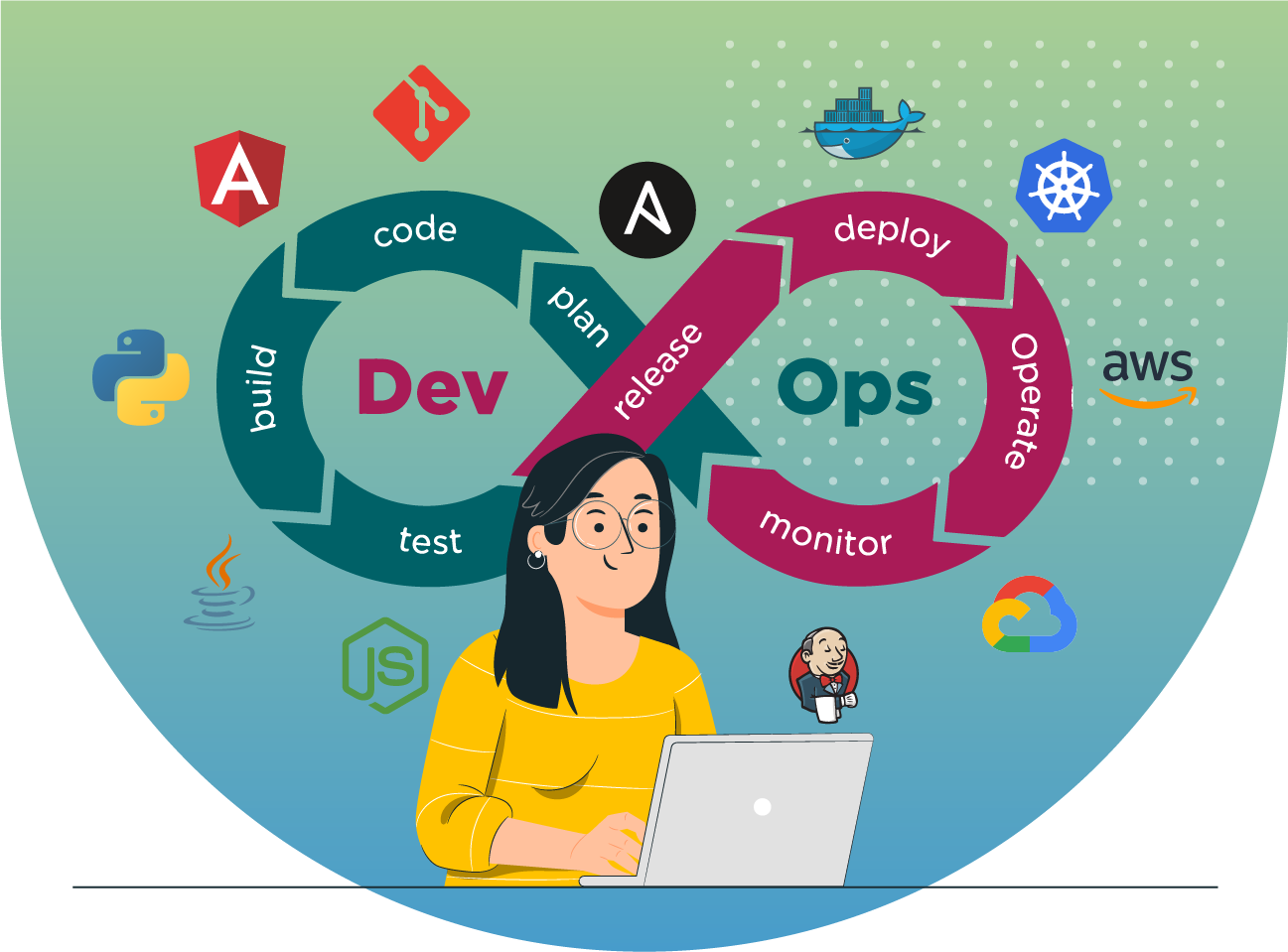


We help large enterprises with end-to-end DevOps consulting services right from consulting, assessing practices, setting up the DevOps environment, and using best-in-class tools to automate the entire delivery pipeline.
DevOps As A Service offers 4 Cs that define the overall cultural shift in software engineering methodologies. SPEC INDIA’s skillful DevOps consultants aim to maximize the revenue cycle by reducing time-to-market, producing error-free products, and ensuring a close association between teams at a high velocity. Our wide-ranging DevOps service includes:
Setting expectations, evaluation of existing system and process, visualizing and strategizing roadmap

Best-in-class technical architecture across the organization ensures a close collaboration between units
Manage the constancy of a delivery pipeline by identifying and testing potential risk factors through automated testing
Offer a comprehensive solution for release management, change management, setups, and performance optimization

Reach our DevOps experts to make the software development and deployment cycle fast which saves cost as well as time.
There are many tools that help to simplify the task of DevOps consultants. Our DevOps Experts are well-versed in using the below tools.
Jenkins is a top DevOps technology that produces fantastic results at any scale. It is an open-source automation server that provides numerous plug-ins for project development, deployment, and automation.
Popular DevOps tool Selenium is used as a framework for automated software testing of web applications. Selenium provides the quick, efficient, and accurate testing technology that DevOps personnel need.
Docker is a popular software platform for rapidly developing, testing, and deploying applications. It is an excellent PaaS platform that uses OS-level virtualization to distribute applications in containers.
Google's Kubernetes is a major container orchestration tool. Kubernetes, as a capable DevOps solution, aids in the deployment of containerized apps to a cluster of devices and automates container distribution.
Puppet is well-known in the DevOps field as a user-dependent tool that contributes to the source code. It is supported by a large infrastructure and has excellent documentation and community assistance. It is built on Ruby and employs a bespoke domain programming language.
Ansible is a popular open source automation tool for creating and standardizing automation techniques such as apps, network setup, development environments, and cloud-based deployments.
Hire specialist DevOps experts to provide specialized DevOps consulting services. We can assist you in establishing and deploying a fully dedicated DevOps engineer team in less than a week.
Hire DevOps Engineer
Discover the diverse range of industries we proudly support with our innovative software solutions to companies of different business verticals. Our expertise spans multiple sectors, ensuring tailored services for every unique need.
SPEC House, Parth Complex, Near Swastik Cross Roads, Navarangpura, Ahmedabad 380009, INDIA.
This website uses cookies to ensure you get the best experience on our website. Read Spec India’s Privacy Policy